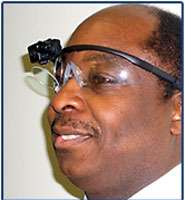Watching me, watching you

(PhysOrg.com) -- Software that tracks shoppers' eye movements as they browse supermarket shelves may seem a bit Big Brother, but the latest technology in 'eye-tracking', which monitors what grabs a person's attention, could have far-reaching implications for consumers and result in services being tailored towards their specific interests in the future.
The software is the result of a partnership between the University’s Department of Computer Science and Applied Science Laboratories (ASL). The latter’s eye-tracking system (Mobile Eye™), has been combined with the University’s vision location and mapping software (SLAM) to create a unique technology (GazeMapä) that allows a viewer’s attention to be measured and analysed. The new system enables the gaze analysis to be done in 3-D, something previously not possible.
The technology allows researchers and designers to collect data about eye movements and what people are looking at (their 'point of gaze') when they perform natural tasks like window-shopping or browsing in-store. It also dramatically reduces the time needed to analyse and interpret the data.
Beyond the consumer market, the software could be applied to research in other fields including sports, reading, safety and training - the possibilities are limitless.
Dr Andrew Calway, Reader in Computer Science, who is leading the project, commented:
‘We are very excited about the potential of this new technology. Computer science at Bristol has a reputation for delivering pioneering research and teaming up with ASL has meant we were able to help take the technology to another level, whilst at the same time applying it to a real-world application.’
Robert Wilson, Product Manager of ASL added:
‘The GazeMap project is a good example of a successful partnership between a university and company, bringing advanced research into a form for everyday use.’
Mobile Eye is a tetherless, compact eye-tracking system. The eye-tracking optics are extremely lightweight and unobtrusive and the recording device is small enough to be worn on a hip pack. The eye image and scene image are interleaved and saved on a DVCR tape. The video is then transferred to a laptop (included) that separates the images, does the analysis and creates a scene video with a cursor overlay.
Alternatively, for real-time tracking the portable DVCR can be connected directly to the laptop. Sample rate is 30Hz. The system is designed for indoor and outdoor use with durability for sports applications. For multiple or parallel studies additional stand-alone optics and DVCR recorders can be purchased.
Provided by University of Bristol (news : web)



















